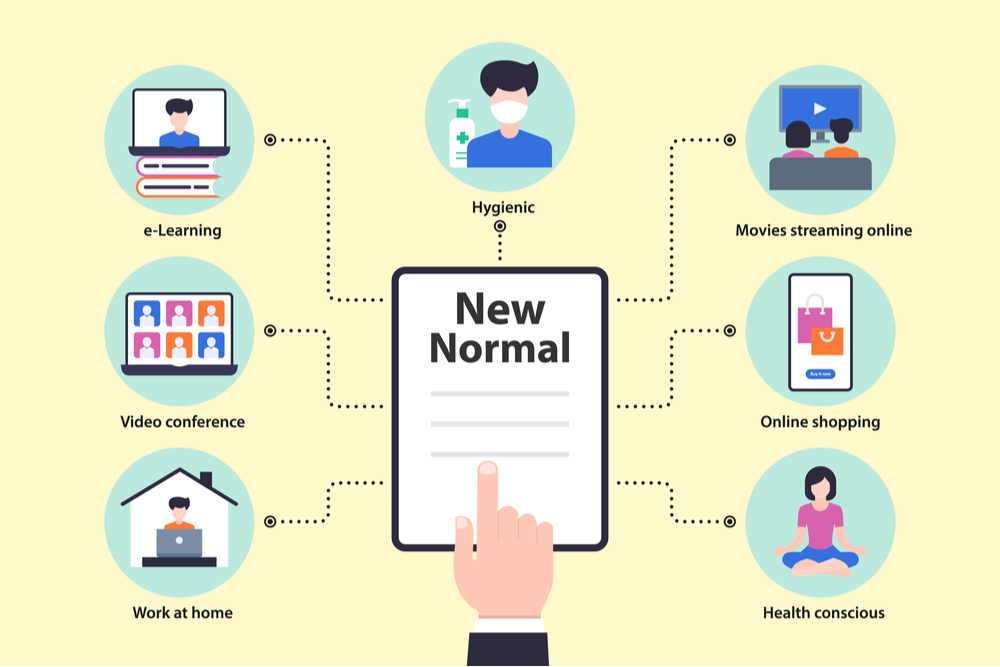The emergence of Covid-19 and society’s subsequent reaction to it have established new norms requiring a change in habits that we all have had to adapt to in real-time. The most impactful is social distancing which is one of the new norms forcing people to work, relax, and even shop from home. This new norm is universal, indiscriminately affecting everyone.
Businesses have been forced to react to this new normal as well. Consumer behaviour has changed. Nielsen has put together 4 consumer behavior changes that businesses should adapt to in order to find opportunities during these trying times.

1. People are spending much more time online
People in every generation have turned to digital technology, and there’s more of an increase among Gen X and Gen B (Baby Boomers). What do people do online? Entertainment, shopping, business, or learning? All of the above. These activities can be done online whether via social media platforms, websites, or applications. Many businesses have changed their marketing strategies to focus more on online whether advertising or offering online shopping channels. Some businesses apply virtual reality or AR such as cosmetics and fashion brands allowing users to virtually try on cosmetics or clothes without visiting the store.
An example is in China, the first country hit by COVID-19, where Shanghai Fashion Week was broadcast using AR technology. Many fashion brands and models joined the event through a virtual runway and live stream together with the features called “See Now, Buy Now” in partnership with Alibaba’s Tmall. This enabled audiences to pre-order the products and communicate with the brands in real-time, even when everyone was staying at home under the lockdown.
Some shops use Facebook Live for selling their products which audiences can CF (confirm) in the comment and then have delivered. Some companies do campaigns online such as Maybelline launching the campaign named #SUPERSTAYCHALLENGE via TikTok where people dance and the lip color will change. It’s very successful as many people engaged and not only females joined the campaign, but males also played.
Some brands can turn this circumstance into a new opportunity to reach a larger audience, gain sales, and increase brand awareness and engagement by utilizing the advantages of digital marketing technology.
2. Focus more on quality and security
When everyone spends less overall but pays more for necessary things, the quality and security of the products becomes the core concern before purchase. These refer to the quality of the product from production and packaging until delivery.
This is especially relevant today with food delivery. Restaurants need to make sure that food is safely prepared and packaged, maintaining the appropriate temperature, texture and shape for as long as possible. Of course, the taste should be as delicious as if customers are eating at the restaurant. Food handling after it leaves the restaurant is of paramount importance. Customers will notice whether the delivery person is wearing a mask and gloves.
Strict QC processes are important, and if these haven’t been adapted to the current situation then now is as good a time as any to make sure they are. If companies can keep product quality consistent, plus offer security, they could gain sales and loyalty due to perceived trust. Customers are more likely to pay a higher price if the products or services can ensure quality and security.
3. Purchasing more local brands
The number of people buying local brands has increased by 70% with the spread of Covid-19. The reasons vary from logistics to trust, but many people are buying more local products because local brands know how to communicate better with their local audiences in a manner that allows them to appeal to their real local needs. So, it’s an opportunity for companies to adapt their marketing strategies as a response to the consumers’ immediate needs.
4. New business models
A business model gaining popularity is the subscription model. More and more products are offering subscription options to customers to make shopping for repetitive goods more convenient, think groceries. For a clearer picture applicable to Bangkok, imagine you are a local restaurant and you ask a gas shop to fill the gas tank every Sunday or if you are selling beverages such as milk tea or fresh juice, then you ask an ice shop to deliver ice to you every Friday. This model not only is suitable for grocery shops, but also to all consumer products. This can be a way to increase loyalty and sales generation in the long run as well. By applying this business model, you can forecast future income as well.
It is important to take this as an opportunity to step out of our comfort zones and approach things in a new way. Turning from offline to online, expanding service areas or delivery areas, improving quality of delivery, and making an impact through social media. It’s time to escalate business strategy and make use of digital marketing. It might be the key to determining whether or not your products and services will survive this hard time. The new norm is here for us to adapt and thrive.



